Featured Articles
HOW HE DID IT: More Mastery From All-Time Great Bernard Hopkins
Bernard Hopkins proved yet again that age is just a number by becoming the oldest world champion in history for a second time after beating Tavoris Cloud in Brooklyn on Saturday night.
Although he fell a little short of matching the same level of virtuosity shown in the Felix Trinidad, Antonio Tarver and Kelly Pavlik fights (he’s getting on a bit now after all), this was still a staggering display by Hopkins. Indeed, in spite of his opponent’s technical shortcomings, many of which were exposed throughout the fight, some thought Cloud –once considered a viable opponent for pound for pound contender Andre Ward—would be throwing too many punches and applying too much pressure for the old-timer to deal with.
Hopkins’ win over Cloud shouldn’t really have come as too much of a shock for anyone, for this is not the first time Bernard Hopkins has proved the naysayers wrong. With a perspicacity that may be unrivalled in the modern era, Hopkins has built a legacy based on the mastering of fancied younger fighters with perfect or near perfect records.
Here, I’d like to highlight what Hopkins did that allowed him to subdue and control an opponent 17 years his junior.
Footwork
It’s been said here before that the fighter who can dictate his opponent’s footwork using his own footwork will usually control the fight. It was clear from the opening bell that this was Bernard Hopkins’ strategy. Because Cloud tends to load up on his punches, he’s either uncomfortable in doing so or is unable to let his hands go unless his feet are well underneath him and planted. Conversely, because Hopkins never looks to load up with anything big, he can let his hands go freely without having to set himself first. By employing lateral movement and never allowing his opponent to set himself, Hopkins was able to minimize Cloud’s offensive capabilities while maximizing his own in the process.

Notice how Hopkins’ lateral movement forces Cloud to reposition himself or risk conceding an angle.
Bernard Hopkins is notorious for his relatively low punch output. However, if he’s faced with an opponent who struggles to cut the ring off and comes forward in a straight line, his movement causes them to constantly think about his location instead of punching.
Needless to say, movement alone doesn’t win fights. Therefore, with Cloud’s punch output reduced, Hopkins had to take advantage by producing enough offense of his own to please the judges.
Feints
In response to following him around the ring, Hopkins would provoke a reaction out of Cloud with a shoulder feint, before redirecting his movement back the other way. Almost contradictory, a feint on an aggressive fighter tends to have the opposite effect as it does on a defensive based or counterpunching fighter. Where a feint will usually draw a counter from a defensive fighter or counterpuncher making them more aggressive, a feint will usually slow down the pace of an aggressive fighter, making them more hesitant. By the mid-way point in the fight, Cloud had become over sensitive to Hopkins’ shoulder twitches and feints. As a result, any time Hopkins stopped moving long enough for Cloud to get close to him, Hopkins would feint him out of a defensive position, before nailing him with a lead left hook to the head or the body, a counter right cross, or a slight variation on his usual jab.

Notice how Hopkins sudden level change/feint pulls Cloud’s lead arm away from his guard, leaving an opening for a right cross.
Something I noticed while watching the fight was how Hopkins didn’t really bother throwing his signature right hand lead much. There were a few occasions nearing the end of the fight when he caught Cloud coming in with it, but apart from that, it certainly didn’t feature as prominently as it has in the past. This, I believe, was due to the fact that Hopkins rarely looked to clinch or tie up his man. Hopkins often uses his sneaky right hand lead as a way of getting himself inside where he can tie his opponent up. Because Hopkins’ main strategy was to keep Cloud from getting set, using footwork to turn his man and keep the fight primarily on the outside, Hopkins wasn’t too concerned with getting tying Cloud up via his right hand lead.

Here’s Hopkins getting inside on Joe Calzaghe using his right hand lead. This has been one of Hopkins’ primary tactics for gaining entry over the years.
The Jab
In the right hand lead’s place, Hopkins introduced a slight variation of his usual jab. The jab is boxing’s most versatile punch. Here, rather than use it to set up other punches or as a probe to gain intelligence, Hopkins used a lunging jab to disrupt Cloud’s forward momentum and to prevent him from getting to the inside.

Here is Hopkins executing a lunging jab at various stages during the fight. Notice how Hopkins’ head is taken away from the centerline. The majority of fighters will aim their counters toward an opponent’s head. By slipping to the right as he’s stepping forward with his jab, Hopkins is taking a pre-emptive measure against a potential jab or counter from Cloud.
Counterpunching
Whenever the action took place at close quarters (Cloud’s best chance of winning the fight) Hopkins managed to get the better by way of his superior counterpunching ability. One of the things that I noticed during the fight was how much Cloud telegraphs his punches, particularly his wide swings in close. On the few occasions when Cloud found himself in a more advantageous position, Hopkins managed to neutralize much of what Cloud was throwing by threading shorter, crisper blows inside of Cloud’s wide swings.

Here’s Cloud trying to work inside with wide hooks. Hopkins, the superior craftsman in close, thwarts them easily by rolling and countering with shorter hooks and uppercuts.
Part of what makes Hopkins a truly special fighter is his ability to draw leads from his opponents by offering them false targets, creating specific openings for specific punches. Although Hopkins’ reflexes and reaction time are excellent for a 48 year-old fighter, they are greatly enhanced by the fact that he knows what punches his opponents are likely to throw in certain situations.

Here is Hopkins in the aptly named Philly shell/half guard defense. As is often the case with when an orthodox fighter is confronted with this defense, Cloud attempts to land a right hand toward the seemingly unguarded area of Hopkins (left side). Although its main purpose is for defending, the half guard defense is great for drawing right leads. Here, Hopkins knows what punch is likely to be thrown and as a result, rolls with the blow and lands a right hand counter. What seems like split second reflex timing is really down to probability.
Here’s another example.

Notice how low Hopkins is carrying his gloves in the first still. This is no coincidence. Hopkins’ low gloves (particularly his rear) are designed to draw a left lead from an opponent. Sure enough, Cloud obliges and Hopkins slips to the outside of the jab and counters with a right cross.
Although the official decision was that the cut above Cloud’s eye was caused by an accidental clash of heads, in reality, it stemmed from a short left hook and from Hopkins’s ability to draw a lead and counter.

Here, as Cloud leads with a jab, Hopkins slips to the outside of the blow and comes back with a short left hand after missing with his initial right hand counter.
Defense
Although he’s starting to get hit more often these days, Hopkins’ defense is still world class. It’s one of the reasons why he’s never been seriously hurt or rocked in the ring. Apart from solid fundamentals (correct balance, tucked chin, body angled slightly to the side etc.) Hopkins elusiveness in the ring can be attributed almost entirely on the pre-emptive measures he takes. Prior to a fight, it’s well documented that Hopkins leaves no stone unturned in scouting his opponents –how many times during the past have we seen a Bernard Hopkins opponent have their primary weapon taken away from them?
Although many (Andre Ward during the HBO telecast included) believed that Cloud’s best weapon was his right hand, I think his left hook looks like his most dangerous punch. After watching the fight, I think Bernard Hopkins felt the same way.
Although Hopkins was circling both left and right, he seemed to be moving more to his right (to Cloud’s left) during the fight. Although this may suggest that Hopkins was indeed trying to avoid Cloud’s right hand, moving toward a blow with the intention of crowding it (not allowing it to reach its maximum velocity or power) can also be a way of stuffing that particular blow. By circling toward Cloud’s left hand, Hopkins was able to square Cloud up. If Cloud were to throw his left hook after being made to turn to his left, Hopkins would see it coming due to the wide, highly telegraphed angle the blow would now be coming from.

Here’s Hopkins moving to his right (Cloud’s left) with his non-working hand glued to the side of his head. As Cloud throws his left hook, Hopkins stuffs the blow, taking it on his right arm.
Here we see it again.

As Hopkins is tending to his right, Cloud has to square himself up to throw his left hook (2nd still). This time, Hopkins is able to circle out and away from the blow. Notice how Hopkins has his non-working hand glued to the side of his head ready to block the left hook in the second still. This type of pre-emptive measure is one of the reasons why Hopkins has rarely been hit clean during his career.
All in all it was a masterful display from Hopkins. Although Cloud kept it competitive throughout, there can be no argument as to who the better fighter was (I scored it 117-111 for Hopkins). Using clever footwork, subtle shifts, broken rhythm (changing the tempo of his punches and movements) along with feints and short combination punching in close (a rarity in a Bernard Hopkins fight these days), Hopkins neutralized Cloud’s predictable linear attacks in what was possibly his cleanest, most aesthetically pleasing performance since the Kelly Pavlik fight. I found it ironic that Hopkins’ trainer, Nazim Richardson, referenced Joe Louis’ short punching during one of the rounds. As I was watching the fight, I thought Hopkins’ movement was eerily similar to that of Jersey Joe Walcott’s when he out boxed Joe Louis in their first fight but failed to get the decision.
We are literally running out of superlatives to describe Bernard Hopkins. For me, he’s not only the best fighter of his era, he is among the greatest fighters ever, period. This once in a lifetime phenomenon won’t be around too much longer, so let’s just savor the moment and enjoy him while he’s still around.
-

 Featured Articles4 weeks ago
Featured Articles4 weeks agoAvila Perspective, Chap. 330: Matchroom in New York plus the Latest on Canelo-Crawford
-
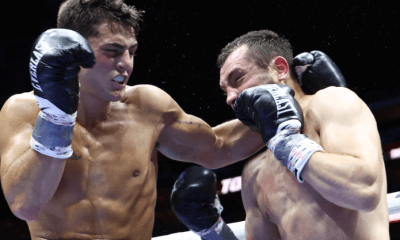
 Featured Articles3 weeks ago
Featured Articles3 weeks agoVito Mielnicki Jr Whitewashes Kamil Gardzielik Before the Home Folks in Newark
-
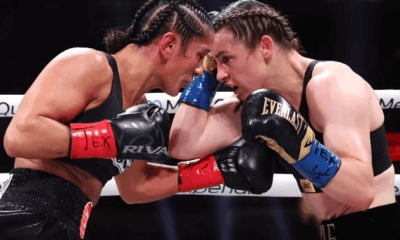
 Featured Articles8 hours ago
Featured Articles8 hours agoResults and Recaps from New York Where Taylor Edged Serrano Once Again
-
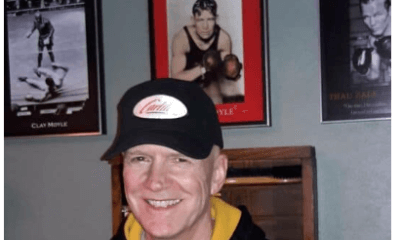
 Featured Articles4 weeks ago
Featured Articles4 weeks agoCatching Up with Clay Moyle Who Talks About His Massive Collection of Boxing Books
-
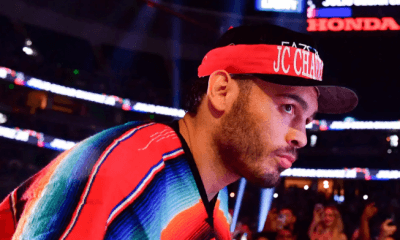
 Featured Articles5 days ago
Featured Articles5 days agoFrom a Sympathetic Figure to a Pariah: The Travails of Julio Cesar Chavez Jr
-
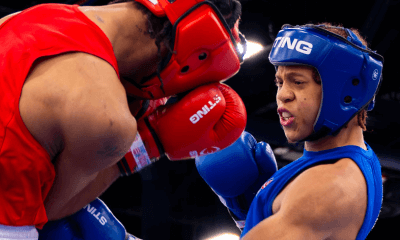
 Featured Articles3 weeks ago
Featured Articles3 weeks agoMore Medals for Hawaii’s Patricio Family at the USA Boxing Summer Festival
-
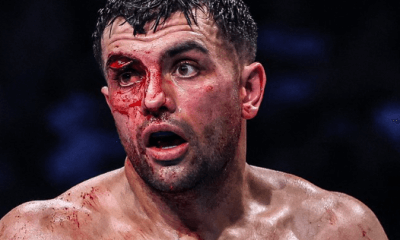
 Featured Articles7 days ago
Featured Articles7 days agoCatterall vs Eubank Ends Prematurely; Catterall Wins a Technical Decision
-
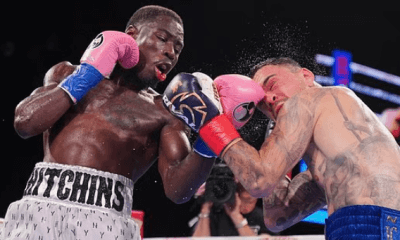
 Featured Articles4 weeks ago
Featured Articles4 weeks agoRichardson Hitchins Batters and Stops George Kambosos at Madison Square Garden

















